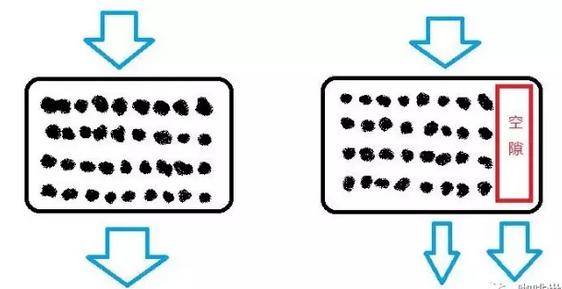Barista skills: making Italian concentration time & grindness and Italian concentrated extraction
Time is the third most important element in the production of espresso. Here time refers to the extraction time, that is, from pressing the extraction key to pressing the stop extraction key. It also determines the success or failure of a cup of concentrate. If you use 20 grams of coffee powder to produce 50 grams of liquid, but you only use 10 seconds, then maybe this cup of concentrated will not taste very good. Now it takes between 22 and 40 seconds to extract and concentrate, and in most cases we take 25 to 32 seconds to extract and concentrate.
But now in the process of extraction, we think that the importance of liquid weight is more important than time, so we should first ensure the correct liquid weight and then pay attention to its time. For example: our ideal state is: 20g powder 40g liquid, 30 seconds. We find that the liquid weight is fixed and the time can be relaxed.

Why can time be adjusted? Because it's not very important.
There are three factors that affect the extraction time of concentration:
1. Particle size of powder
Imagine two pipes, one filled with stone and the other filled with sand. When the water flows through, the pipe filled with stone must be faster than the one filled with sand. In fact, this truth is also applicable in concentrated extraction. The resistance of fine particles to water is greater than that of coarse particles.
2. The magnitude of the pressure
The coffee machine is set to 9bar pressure, which is a pressure that can be used by most machines, and as you can imagine, the smaller the pressure, the slower the concentration. In general, the traffic is about 250-500ml/30 seconds. You can measure it-take off the handle of the coffee machine and press the extraction button, then catch the water flowing out and measure it. I found that it is optimal if the traffic is in 200-280ml/30 seconds. Even if each head on a machine has a different flow rate.
3. The difference of powder net
The difference between powder mesh is mainly in the size of the hole. This is called the "total open area" referred to as TOA. More TOA will make it easier for water to flow through the powder net, but don't worry too much, we are already using VST powder net.
So focus our most attention on the particle size of the powder, because you will spend the most time on it. Once we have locked in the liquid weight and powder weight, then we are left to determine the extraction rate by adjusting the time. Adjusting the degree of grinding will involve increasing or decreasing the strength or extraction rate at the same time. In most cases, fine grinding will increase the extraction rate and concentration. Because fine grinding is to increase the surface of the coffee that is extracted. So take a look at the following picture:
Let's consider the following example: 20g of powder produces 50g of liquid, which takes 25 seconds. After you taste it, you find it is thin and sour. It is found that there may be insufficient extraction. At this time, do not adjust the flavor by adjusting the liquid weight, because more liquid will make the concentration more water, and less liquid will make the concentration more sour. Then the mill will be fine to increase the flavor and alcohol thickness.
In practical work, if we find that the flow rate is too fast or too slow, we should learn to think about the degree of grinding. Back to the first sentence-liquid weight is more important. So let's sum up:
1. Time is flexible, and the goal is to achieve your expected liquid weight.
2. Time is fine-tuned and serves the liquid weight.
3. Although pressure, flow and powder mesh can affect the extraction time, you don't need to adjust them too often.
4. Fine = short time coarse = long time
Now we have explained the effects of powder quantity, liquid weight and time on concentration. I hope these points can give you new inspiration. Welcome to discuss. (transferred from Matt Perger)
Important Notice :
前街咖啡 FrontStreet Coffee has moved to new addredd:
FrontStreet Coffee Address: 315,Donghua East Road,GuangZhou
Tel:020 38364473
- Prev

Channel effect? On the Channel effect in Coffee extraction
Today, I'm going to talk about the channel effect. when I first learned about the channel effect, it was not long before I made coffee, and the coffee powder could not be well distributed in the powder bowl. My teacher often told me that your coffee has a channel. At that time, I was just trying to figure out some superficial things according to the gourd. What's the difference?
- Next

A detailed introduction to the manors of the eight major coffee varieties
Among the types of coffee, Blue Mountain Coffee is the best coffee, produced in the Blue Mountains of Jamaica. The Blue Mountains surrounded by the Caribbean Sea, whenever the sun shines directly on the blue water, it reflects to the mountain and emits a bright blue light, hence its name. This kind of coffee has the characteristics of all good coffee, not only full-bodied and mellow, but also because of the perfect combination of sweet, sour and bitter coffee.
Related
- Beginners will see the "Coffee pull flower" guide!
- What is the difference between ice blog purified milk and ordinary milk coffee?
- Why is the Philippines the largest producer of crops in Liberia?
- For coffee extraction, should the fine powder be retained?
- How does extracted espresso fill pressed powder? How much strength does it take to press the powder?
- How to make jasmine cold extract coffee? Is the jasmine + latte good?
- Will this little toy really make the coffee taste better? How does Lily Drip affect coffee extraction?
- Will the action of slapping the filter cup also affect coffee extraction?
- What's the difference between powder-to-water ratio and powder-to-liquid ratio?
- What is the Ethiopian local species? What does it have to do with Heirloom native species?

